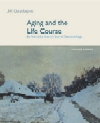1. Why has poor health become associated with old age, and how are
recent improvements in health care changing that association?
Poor health has become associated with old age because of the epidemiologic
transition. The epidemiologic transition is defined as a change in the leading
cause of death from infectious diseases to chronic diseases. Recent improvements
in health care and prevention now mean that most older people will remain in
relatively good health and that the years spent being disabled are likely to
be compressed into the final years of life. This is termed the compression of
morbidity thesis. 2. How do people's lifestyles and social support systems affect their
health in old age?
Lifestyles have a large impact on health over the life course. People who don't
smoke and who exercise, drink in moderation, and keep their weight in the normal
range are less likely to become disabled than those who do not. The increasing
significance of healthy lifestyles means that medicine is no longer the sole
answer to dealing with threats to health. Social support systems also play a
role in health outcomes. Having a strong social support system improves morale,
reduces the risk of depression, and even enhances recovery from surgery. 3. What is the best measure of an el-derly person's socioeconomic status,
and how is SES connected to a person's health?
The best measure of an elderly person's socioeconomic status is education. People
of higher SES have better health in old age than people of lower SES. One reason
is that they have better access to health care. People of lower SES are more
likely to have worked in stressful jobs where they could be injured. They also
have more resources that give them the opportunity to engage in positive health
practices. 4. How do gender, race, and ethnicity affect an older person's health?
Women have poorer health and higher levels of disability than do men. This is
not only true for the United States but for other countries as well. Both biological
and behavioral factors appear to account for the differences. Older minorities
have poorer health than whites on several measures. As they age, they are more
likely to develop a serious illness and more likely to rate their health poorly. 5. How have changes in Medicare and the health care industry affected
older Americans?
Medicare is one of the fastest growing federal programs. Costs will rise sixfold
as the baby boom generation approaches retirement age. As political pressures
increase to cut Medicare expenditures, more elderly are likely to be treated
by physicians affiliated with health maintenance organizations. The danger is
that efforts to save costs may reduce the quality of care. And recently many
HMOs have begun pulling out of the Medicare program. One of the main political
issues for the future will be determining how best to control the costs of Medicare
while maintaining quality health care for the aged. | 


 2002 McGraw-Hill Higher Education
2002 McGraw-Hill Higher Education